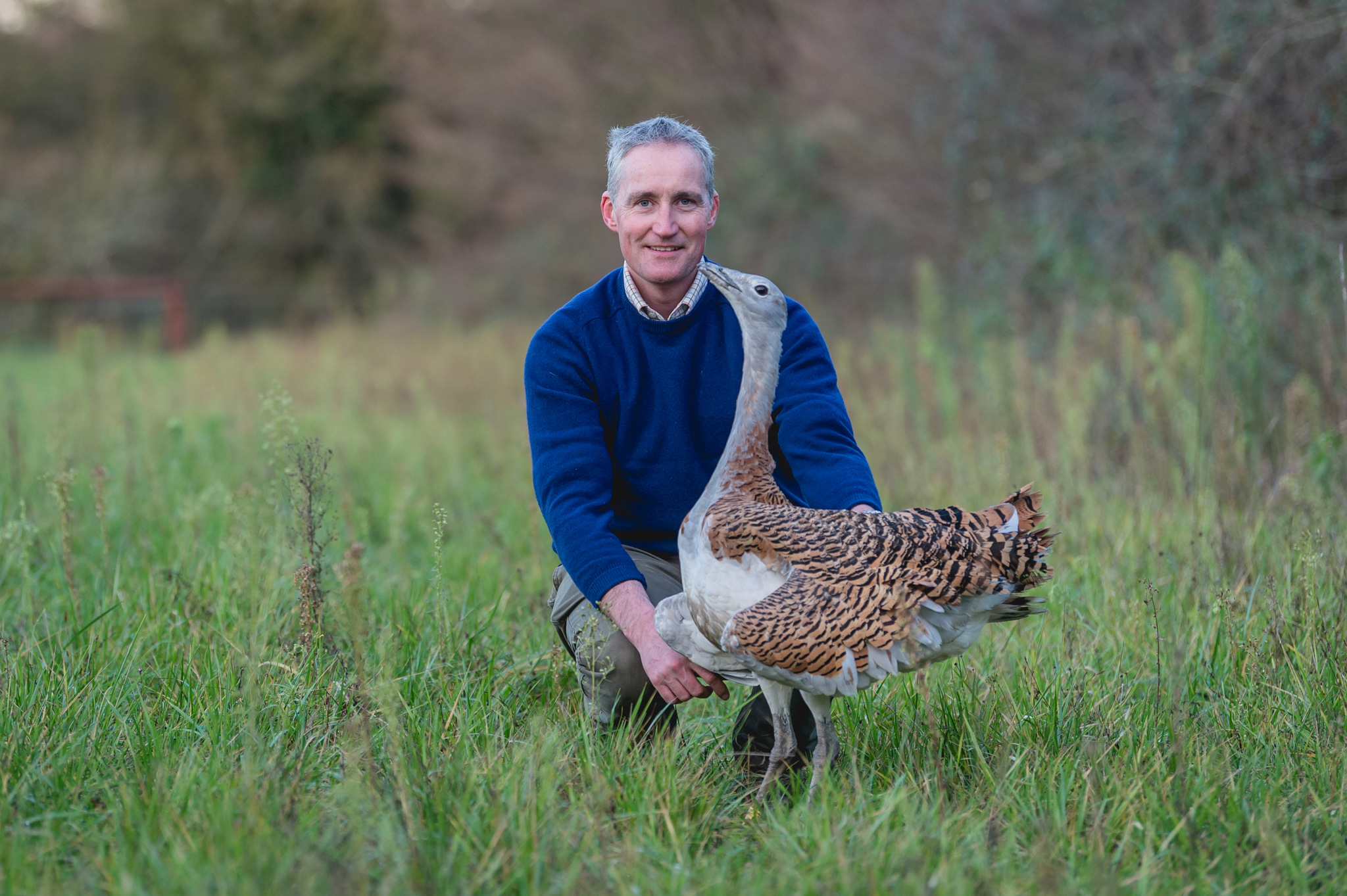Great Bustard at Watatunga Wildlife Reserve

Many of you know and love our great bustard, (Otis tarda) that roam free within the reserve. We would really love to see them breed in the reserve and we’ve been working hard to get them in tip-top condition for this year’s breeding season.
Last spring, we planted 3 hectares of lucerne, vetch, sainfoin and clover specifically for the bustard as a natural food source for them to tuck into. Luckily, in last summer’s drought, we were able to irrigate the plots thanks to our geography – most of our lakes are spring fed and the springs continued to run all summer. So, fortunately the plots grew well and the bustard soon found them and started to graze the plants. We weighed them and were excited to find that with this natural food they had put on more weight than any amount of supplementary feed we could give them.

As I write, the birds are traveling the reserve quite regularly looking at where they spent time last year displaying and feeding. Now with the new food sources, we’re interested to see if the courtship rituals move to new sites. Bustard nest on the ground and once the chicks hatch they are fed by the adult who picks up the food and passes it to the young. This can go on for several weeks as the young birds mature.
Should birds need to be hand-reared for some reason, it’s really important that they do not become imprinted on humans. To ensure this doesn’t happen, the wonderful team at the Great Bustard Group do a fantastic job of dressing up as bustard and using a hand puppet beak to feed the chicks.
The progress made by the Great Bustard Group is truly incredible and they have brought the bird back to Wiltshire having not been in this country since 1832. We are proud to be working with them and offering some of the birds that are not fit for release a natural environment here at Watatunga.
Come and meet our bustard on tour – who knows, maybe you’ll even catch them mid display like visiting artist Lucy Boydell.
